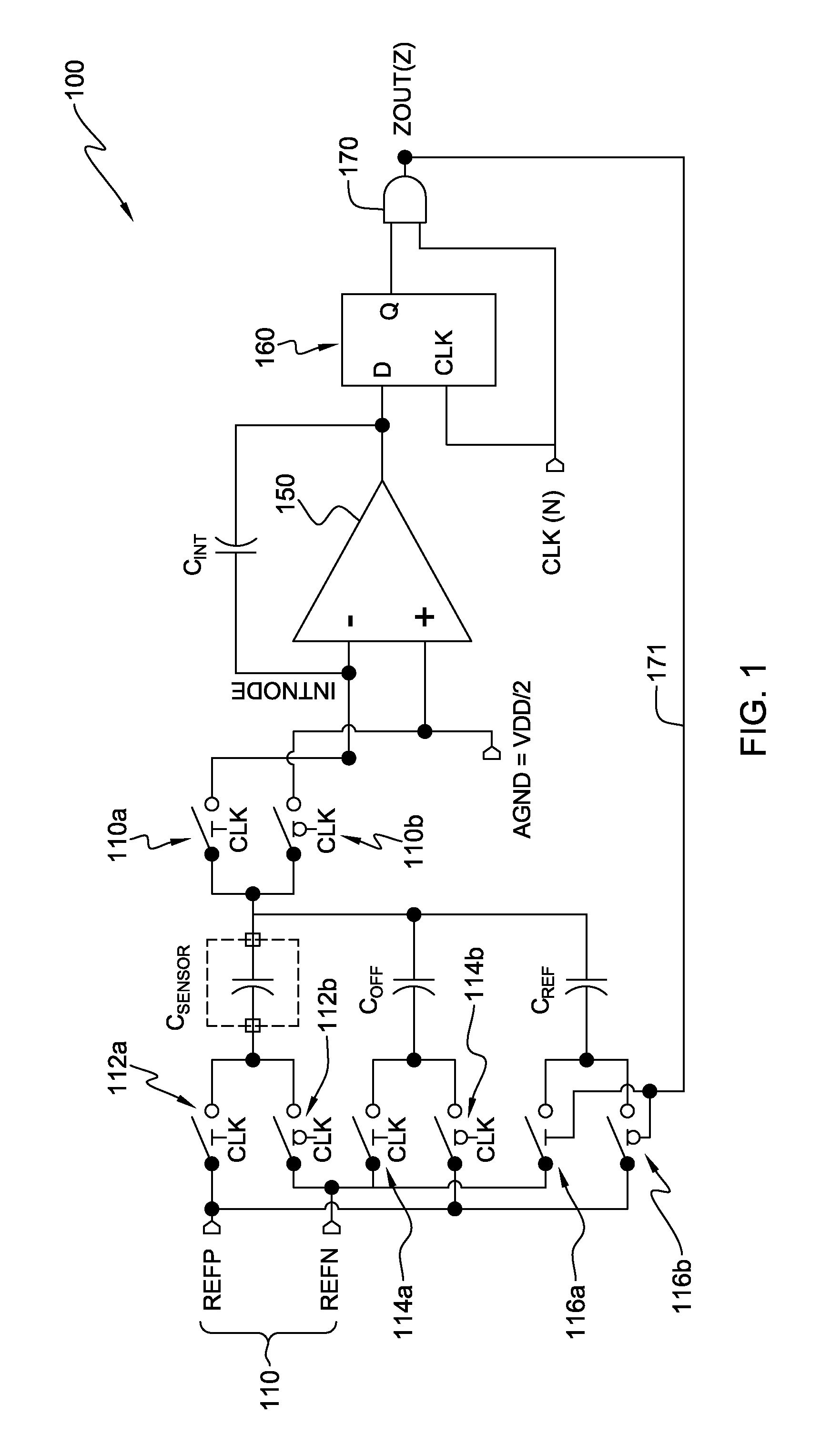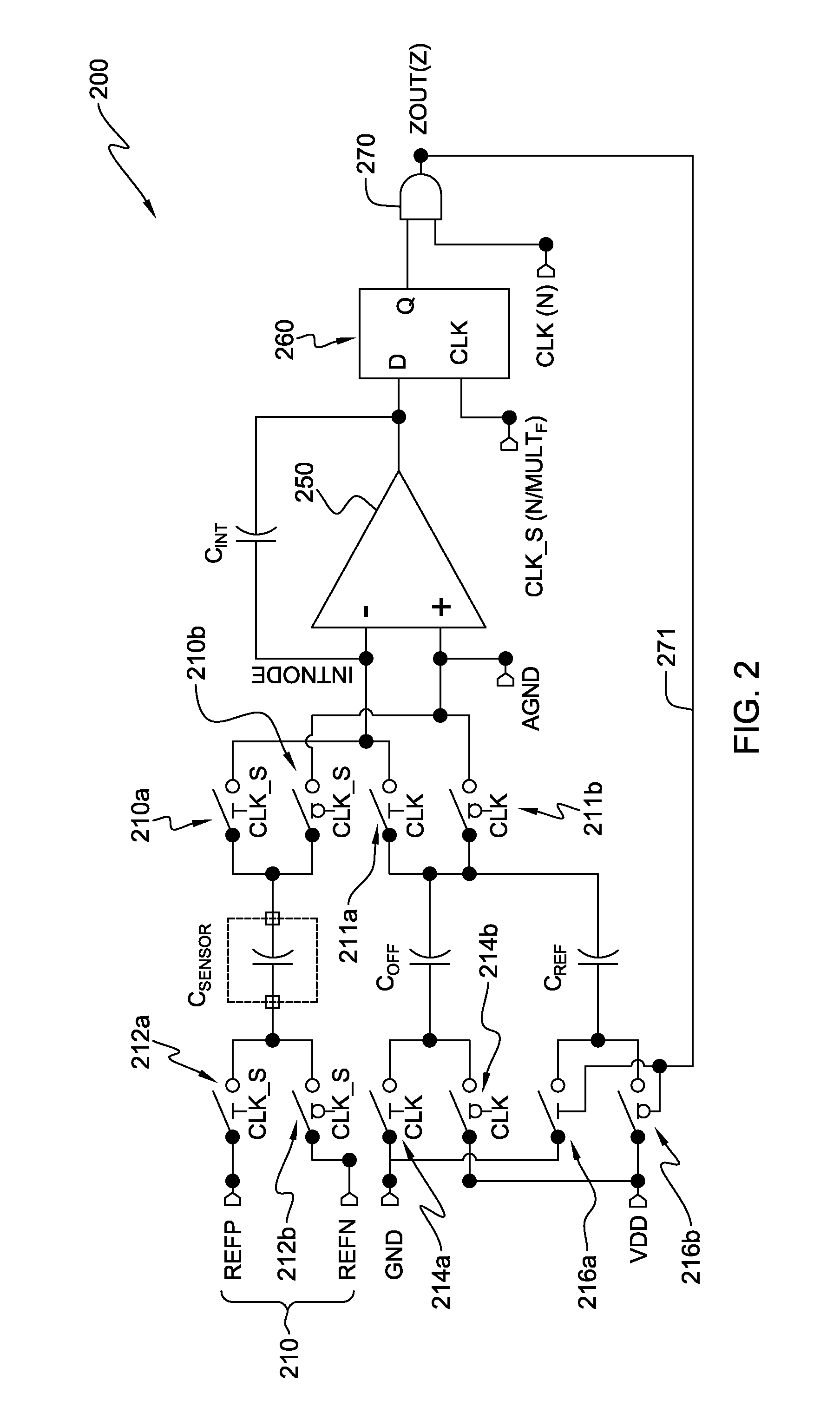Wide range charge balancing capacitive-to-digital converter
a capacitive-to-digital converter, wide-range technology, applied in the direction of analog-digital converters, instruments, transmission systems, etc., can solve the problems of impracticality and cost depending on the desired implementation, and achieve the effect of reducing capacitan
- Summary
- Abstract
- Description
- Claims
- Application Information
AI Technical Summary
Benefits of technology
Problems solved by technology
Method used
Image
Examples
Embodiment Construction
[0014]FIG. 1 shows an example of a charge balancing capacitive-to-digital converter 100. Converter 100 has as a main input CSENSOR whose output node is connected over a first switch 110a to the negative IntNode of an operational amplifier (or integrator) 150 and over a second switch 110b to the positive input of operational amplifier 150. As shown, the first switch is clocked with a clock signal CLK and the second switch with the inverted CLK. The output node of operational amplifier 150 is bridged with the IntNode thereof by an integrator capacitor CINT and is connected via a demodulator 160 to an input of an AND gate 170, which outputs a signal ZOUT (Z). The other input of AND gate 170, as well as the other input of demodulator 160, is connected to receive clock signal CLK (N).
[0015]The input of CSENSOR is connected to REFP over a first switch 112a, which is clocked by CLK, and to REFN over a second switch 112b, clocked by inverted CLK. The difference between REFP and REFN is the ...
PUM
 Login to View More
Login to View More Abstract
Description
Claims
Application Information
 Login to View More
Login to View More - R&D
- Intellectual Property
- Life Sciences
- Materials
- Tech Scout
- Unparalleled Data Quality
- Higher Quality Content
- 60% Fewer Hallucinations
Browse by: Latest US Patents, China's latest patents, Technical Efficacy Thesaurus, Application Domain, Technology Topic, Popular Technical Reports.
© 2025 PatSnap. All rights reserved.Legal|Privacy policy|Modern Slavery Act Transparency Statement|Sitemap|About US| Contact US: help@patsnap.com



